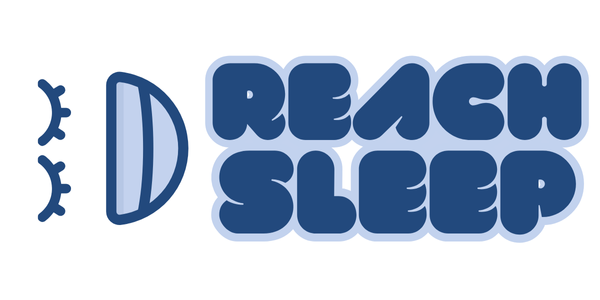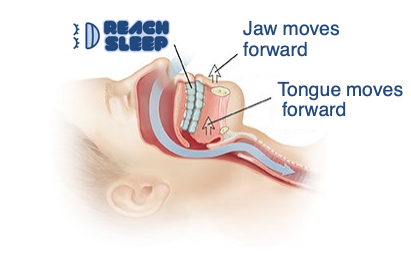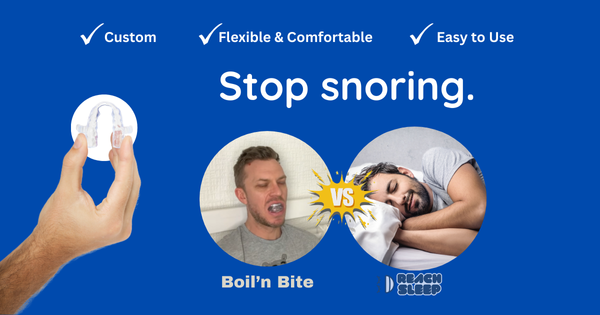Snoring, a common yet often disruptive condition, affects millions of people worldwide, causing poor sleep for both the snorer and their partner. While there are various treatments available, the TAO oral sleep device have become an increasingly popular, non-invasive solution to alleviate snoring. These devices work by adjusting the position of the jaw or tongue to ensure an open airway during sleep, improving breathing and significantly reducing snoring. This article explores how oral sleep devices work, who benefits from them, and how they compare to other alternatives for snoring treatment.
How Oral Sleep Devices Work
Oral sleep devices, also known as mandibular advancement devices (MADs) or tongue-retaining devices (TRDs), are designed to address the underlying cause of snoring: airway obstruction. Snoring occurs when the soft tissues in the throat vibrate due to partial airway blockage, often caused by the tongue, lower jaw, or other tissues collapsing during sleep. Oral sleep devices target this issue by repositioning the jaw or tongue, helping to maintain an open airway and reduce the vibrations that cause snoring.
- Mandibular Advancement Devices (MADs): These are the most commonly used oral sleep devices. They work by gently advancing the lower jaw (mandible) forward, which helps tighten and support the tissues in the throat, keeping the airway open. MADs are typically custom-fitted to the user’s mouth using an impression mold or putty, ensuring maximum comfort and effectiveness. The device is worn during sleep and is designed to be comfortable enough for long-term use.
- Tongue Retaining Devices (TRDs): Unlike MADs, which focus on the jaw, TRDs focus on preventing the tongue from collapsing backward and blocking the airway. TRDs hold the tongue in a forward position using suction or other mechanisms, keeping the airway clear and reducing snoring. These devices are typically smaller and simpler than MADs, but may require some adjustment to get used to.
Both types of devices are designed to be worn at night while sleeping, and they are most effective for individuals whose snoring is caused by issues such as obstructive sleep apnea, age-related changes in muscle tone, or nasal congestion that leads to mouth breathing.
Who Uses Oral Sleep Devices?
Oral sleep devices are used by individuals who snore due to various causes. Some of the most common groups of people who benefit from these devices include:
- Mild to Moderate Snorers: People whose snoring is not linked to severe sleep apnea often find oral sleep devices to be an effective remedy. These devices are designed to reduce snoring by addressing the mechanical cause of airway blockage, especially in people with moderate or intermittent snoring.
- People with Obstructive Sleep Apnea (OSA): OSA is a more severe form of sleep-disordered breathing that involves brief interruptions to breathing during sleep. While continuous positive airway pressure (CPAP) machines are the gold standard for OSA treatment, some individuals with mild to moderate OSA may benefit from oral sleep devices as an alternative. They are particularly effective for people with OSA who are unable to tolerate CPAP therapy or prefer a less invasive solution.
- Individuals with Age-Related Snoring: As people age, muscle tone in the throat and jaw decreases, making it easier for the airway to collapse during sleep. This can lead to snoring or even sleep apnea. Oral sleep devices can help restore proper airway alignment by advancing the jaw, which reduces snoring caused by muscle relaxation.
- People Who Prefer a Non-Invasive Solution: Oral sleep devices are appealing for individuals who want a non-surgical, non-pharmaceutical approach to snoring or mild sleep apnea. They are a great option for those who want a simple, at-home treatment without the need for medical procedures or costly equipment.
Benefits of Oral Sleep Devices
Oral sleep devices offer a range of benefits compared to other snoring and sleep apnea treatments. These benefits include convenience, comfort, affordability, and effectiveness.
- Non-Invasive and Comfortable: Oral sleep devices are non-invasive, meaning they don’t require surgery or complicated medical procedures. They are also designed to be comfortable, with custom-fitted options that reduce discomfort and improve compliance. Most users find them easier to tolerate than other treatments like CPAP, which involves wearing a mask and machine during sleep.
- Effective Snoring Reduction: For individuals with mild to moderate snoring, oral sleep devices can significantly reduce or eliminate snoring. By maintaining an open airway, they prevent the vibrations in the throat that cause snoring, leading to a quieter, more restful night’s sleep for both the snorer and their partner.
- Improved Sleep Quality: Snoring can often disturb the sleep cycle, both for the snorer and their bed partner. By addressing the root cause of snoring, oral sleep devices help improve sleep quality, leading to better rest, increased energy, and improved mood throughout the day.
- Affordable and Accessible: Compared to other treatments like CPAP machines, which require ongoing costs for maintenance and supplies, oral sleep devices are generally more affordable and accessible. Many oral devices can be purchased without a prescription, though it is recommended to consult with a healthcare provider for optimal results. Additionally, they are portable and require no electricity, making them ideal for travel.
- Customizable and Easy to Use: Oral sleep devices, particularly those that require a putty impression, are customizable to fit the unique shape of the user’s mouth. This ensures a snug, comfortable fit that enhances effectiveness. Most users can easily adjust to wearing the device and incorporate it into their nightly routine without much disruption.
Comparison to Alternative Treatments
While oral sleep devices offer many benefits, they are not the only treatment option for snoring and sleep apnea. Here’s how they compare to other common alternatives:
- CPAP (Continuous Positive Airway Pressure):
- Effectiveness: CPAP is considered the gold standard for treating moderate to severe obstructive sleep apnea. It delivers a continuous flow of air to keep the airway open.
- Discomfort: Many users find CPAP machines uncomfortable or cumbersome due to the mask and hose, leading to poor compliance.
- Convenience: CPAP requires electricity and can be bulky, making it less convenient for travel.
- Surgical Options:
- Effectiveness: Surgery may be recommended for individuals with structural issues contributing to severe snoring or sleep apnea. However, surgery carries risks and is typically reserved for severe cases.
- Recovery: Surgical interventions require significant recovery time, and there are potential complications involved.
- Lifestyle Changes (Weight Loss, Sleep Positioning):
- Effectiveness: Lifestyle changes can reduce snoring, particularly in individuals who are overweight or sleep on their back. However, these changes may not be enough for those with more severe snoring or sleep apnea.
- Convenience: Lifestyle changes can be difficult to implement and maintain over the long term.
- Nasal Strips or Sprays:
- Effectiveness: Nasal strips and sprays can help alleviate snoring caused by nasal congestion, but they do not address snoring caused by mouth or throat issues.
- Convenience: These options are easy to use and inexpensive but may offer limited relief for snorers with more complex causes.
Conclusion
Oral sleep devices offer a highly effective, non-invasive, and affordable solution for snoring and mild sleep apnea. By repositioning the jaw or tongue to keep the airway open, these devices significantly reduce snoring and improve sleep quality. They are especially beneficial for people who want a comfortable alternative to CPAP or surgery, as well as for those with age-related snoring or mild obstructive sleep apnea. When compared to other treatments, oral sleep devices stand out for their ease of use, customization, and convenience, making them an appealing option for many individuals looking to enjoy a better night’s sleep.




